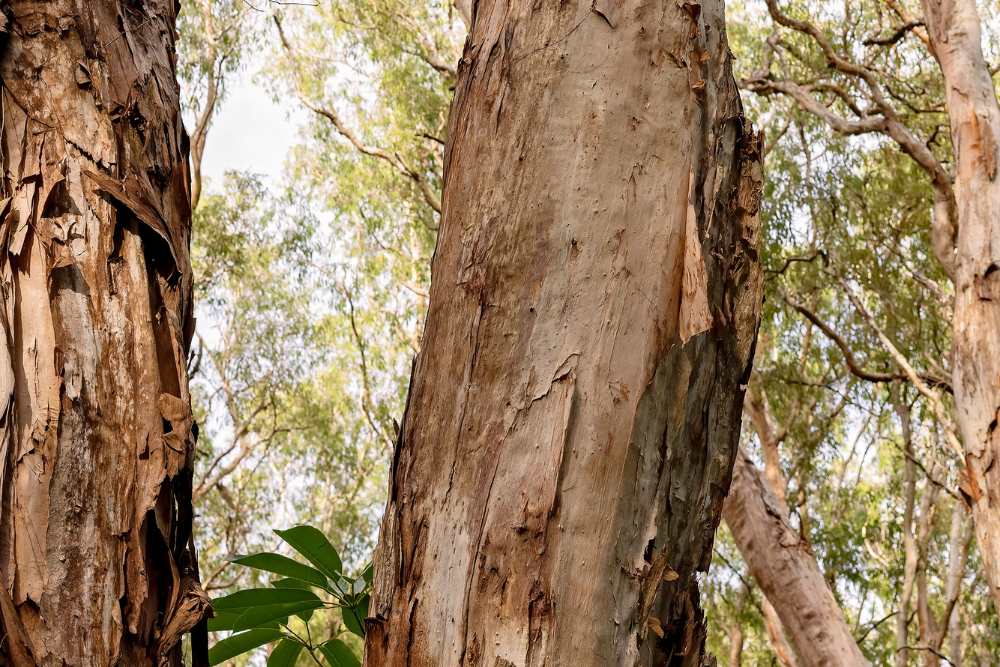
Tree growth may result in shedding bark, but there are other signs to look for, say Georgia tree service experts.
Reasons, Both Good and Bad, Why Your Tree May Be Losing Bark
While the vast majority of trees lose their leaves during this season of the year, should a tree be dropping bark? This question doesn’t have a simple yes or no answer. It depends on the type of tree that it is and what other factors may have contributed to the bark loss. These are the factors that will be explored in this article. Bark shedding can be a natural part of the growth process or it can be a sign of stress or disease.
Natural, Healthy Bark Shedding
Many, even most trees do shed a bit of bark as they grow. This is especially true of older trees which have bark that is tougher and less flexible than its younger counterparts. Just as humans shed skin cells, trees sometimes lose a bit of the outer layer of their bark because they no longer need it or they have grown out of it.
Some trees shed cyclically once a year, others shed their bark slowly in a manner that is considered appealing to the eye. The bark of birch trees for example peels in thin, curling, paper-like ribbons Along with the birch tree family, some other trees that regularly shed bark include sycamores, hickory trees, silver maples, and redbuds.
Bark Injury and Loss Due to Weather Conditions
Extreme changes in temperature can result in damage to bark. Trees are also vulnerable to damage in the very early spring when new growth can be destroyed by colder evening temperatures. This is called sunscald and a tree with it will have blotches of unsightly reddish-brown damage on its bark. Preventative measures can be taken to help trees heal from this sort of weather damage. Below are some examples:
- Water: Moisture is essential for trees. The only time to avoid watering is when the temperature is at freezing or below. Keeping the soil moist helps nourish the tree.
- Mulch: Organic mulch acts as insulation, and nutrition, helping retain moisture and adding to the nutrients in the soil as it decays. It also helps protect the roots from extreme temperatures.
- Cover: Tree blankets during the winter and reflective paint on the lower part of the trunk in the spring and summer can help protect against sun damage and temperature fluctuations. Strategic tree trimming that does not expose the trunk to direct sunlight is also good protection.
Borers, Beetles, Bagworms and Tree Disease
Bark loss can be a sign of tree disease or pest infestation. Other signs that usually accompany pests and/or fungal infections include sawdust, unexpected sap drip, fungal growth, and dead or dying leaves and branches. If you notice any of these symptoms, you should call a reputable tree service company for a consultation with an arborist. Trees can be treated for many fungal infections and pests, but some will require tree removal if certain problems such as hypoxylon canker are detected.
Other common fungal infections include:
- Armarilla
- Anthracnose
- Leaf Rust
- Tar Spot
- Powdery Mildew
Insect pests include a great number of beetles and borers, but also include some moth and butterfly larvae as well.
- Aphids
- Emerald Ash Borer
- Japanese Beetle
- Gypsy Moth
- Tent Caterpillars and more.
About Boutte Tree, Inc.
With nearly 20 years of service to Atlanta, GA and the surrounding communities, Boutte Tree, Inc. has proven its ability to balance tree care and tree removal in an urban setting. Call today for more information about our award-winning tree service.
